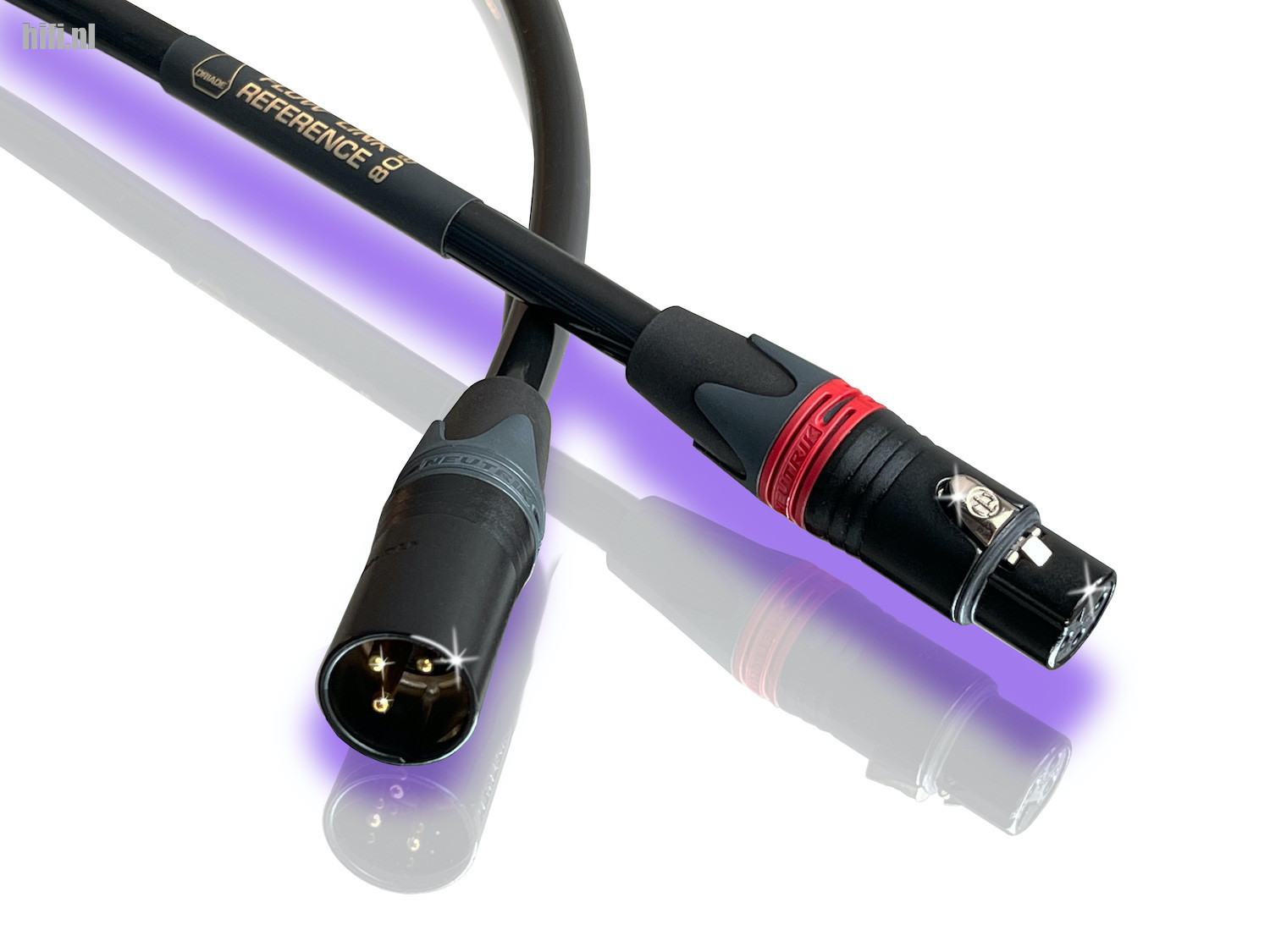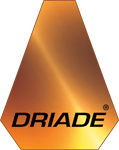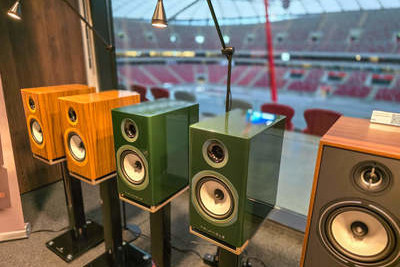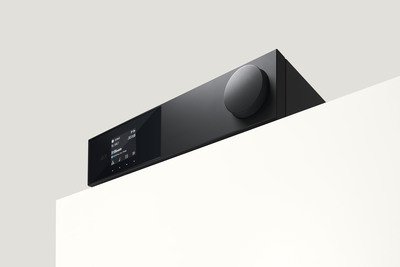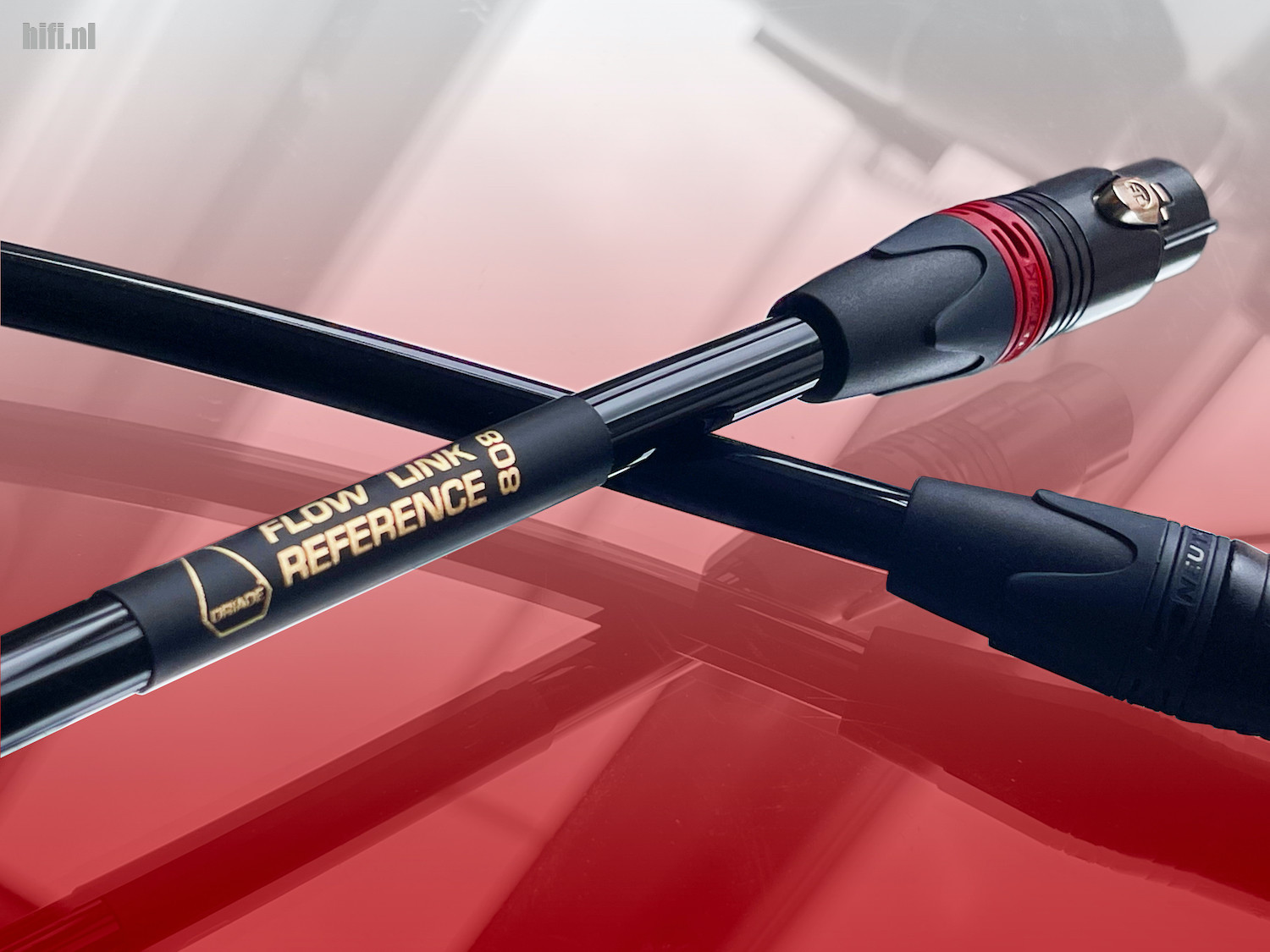
Over the summer we have received two sets of Driade Flow Link Reference 808 balanced interlinks. These all-new Driade Flow Link Reference interlinks follow the launch of its well-received Flow 405 loudspeaker cables that were introduced earlier last year. With this new addition an important step is taken towards a comprehensive cable range by the Dutch highend audio manufacturer Driade Systems. | Voor Nederlands, klik hier
Observant readers will note that the Flow Link Reference 808 interlinks have recently already been featured on the Dutch Hi-Fi platform HIFI.NL. Senior author Rene van Es published an extensive review of the RCA version of the Flow Link Reference 808 (in Dutch only). In this current review we specifically focus on the XLR version of the Flow Link Reference 808. Is it so spectacularly different compared to the RCA version? To learn more, we decided to contact Arnold Heres, the founder and CEO of Driade Systems before we take any further actions.
While being informed about both the XLR and RCA versions over the phone, Heres indicates that both interlinks offer a similar performance and construction with the exception of a high-grade outher jacket and, obviously, the additional (cold) conductor to meet XLR specifications. We also learned that Driade sent us these XLR interlinks primarily for listening purposes and a comprehensive review was not really intended. In fact, for Driade this is more a distinct opportunity to present its latest creations and philosophies to various trained ears during the various stages of development. On the other hand, we feel proud by being given opportunity to be actively involved in the development process of high-grade audio products that are fully developed in the EU and assembled in the Netherlands.
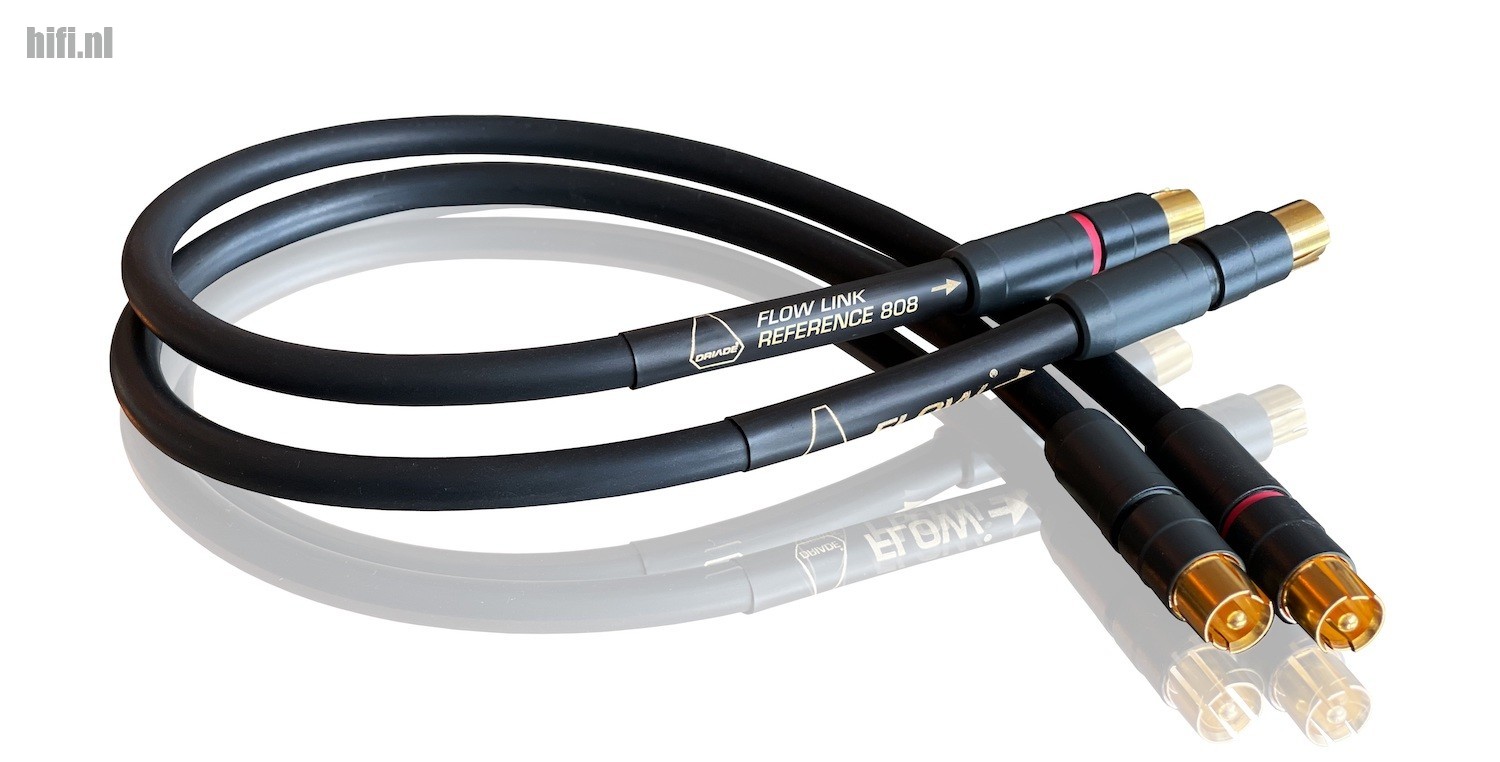
Our balanced opinion
While having a most pleasant chat with Heres -as always- about the developments at Driade and the newly developed Flow interlinks, it becomes clear to us that there is quite a lot to tell about balanced interlinks and, in particular, about the implementation of the technology in equipment itself. In most cases the development of audio equipment with a 100% front-to-back balanced design is as scarce as hen’s teeth. In fact, many Hi-Fi components do offer balanced connections, but this seldomly involves a Fully or True Balanced design. Reviewing XLR cabling on any randomly selected midrange sound system featuring XLR connections won’t reveal the true nature of the subjected XLR cable to the test.
After thinking this over for several days [and an equal amount of sleepless nights – Ed.] we realized that this could be a really nice starting point for an informative editorial piece and decided to write a more extensive review of the Flow Link Reference 808 XLR. While doing so, it offers us the opportunity to dig a few inched deeper into balanced technology itself. But before we go full-swing into techno mode and probably lose most of our readers in the first few paragraphs, we will put the Driade Flow interlink in the spotlights first. Later in this review, we will briefly scratch beneath the visible surface of XLR technology. If you plan to purchase a new set of interlinks and your equipment is fitted with XLR connectors, be sure to read these additional lines.
Driade Flow Link Reference 808
When Heres offered us to listen to his newly developed Flow Link Reference 808 XLR interlinks, we immediately agreed and demanded two stereo sets. We didn’t want to sound greedy, but we tend to do our reviews the correct way and we can provide both the source to the preamplifier and the connection from preamplifiers to power amplifiers with the same brand and type of cabling to provide you with the purest impression of sound, stage and quality. In this review we make use of a Bryston BP26 preamplifier, BDA3 Digital to Analog Convertor, BDP3 Digital Player and two 7B3 power amps. Between power amplifiers and our Usher MD2 Beryllium-series loudspeakers, we applied the excellently performing Driade Flow 405 speaker cabling which we are enjoying for quite some time now. And, not to forget, Tidal as our most preferred source for music content.
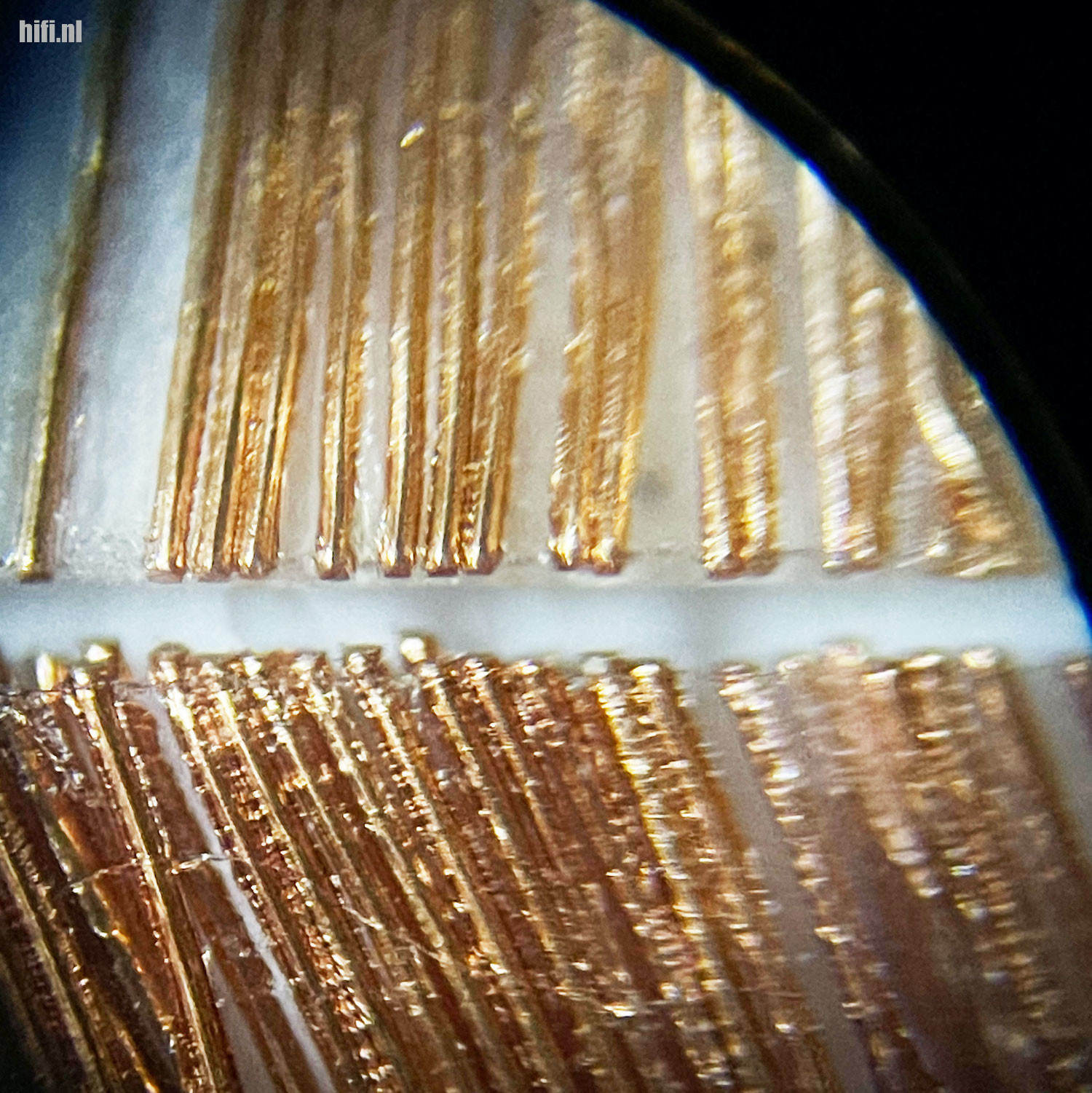
After opening the black shipping box we are introduced to the Driade Flow Link Reference 808 interlinks for the first time. These are, just like the shipping box, completely finished in high gloss black and this provides these interlinks with an exclusive, premium look. The weight, apart from the heavy and robustly build Neutrik XLR connectors, is relatively lightweight. Despite the thick diameter of the outer jacket, the cable is most flexible and can easily be routed behind virtual any Hi-Fi set. Within just a few minutes our trusty Grimm TPRs in our main set are swapped with Driade's interlinks and wow… This is unexpected!
Our first impression is overwhelming. Whereas the Grimm TPR cabling tends to sound a tad technical and neutral, with these Driade’s Flow interlinks we experience warmth, strong dynamics and, above all, a great deal of musicality without the slightest trace of midrange colouration. According to Heres, Driade used the thinnest conductors possible built out of microscopically thin wires that are made out of mirror smooth surface pure copper. This offers the advantage that these interlinks do not have to burn in for very long, which is most convenient for reviews. According to Heres sound and imaging should be near perfect after just 30 to 60 minutes of playing time. Despite this advice we decide to give the interlinks the same treatment as previously reviewed specimens and give them (and ourselves) a little more time to get used to the new situation.
Time to review
As time passes, the sound perfectly balances-out and the soundstage opens even more. The music sounds fluently and let us experience an open and well controlled sound in which we can effortlessly distinguish different vocal lines in the same tone-height. In comparison with the Grimm TPR interlinks the staging is somewhat increased but pushed less towards the listening position. A pleasant experience.
We did not notice any annoying phase errors, exaggerated spaciousness or phase twists that we previously noticed with some cable reviews we performed in the past. The soundstage of this Flow Link Reference 808 reaches a brilliant level of perfection and, above all, these interlinks match remarkably good with our Driade Flow 405 speaker cabling we are using for some extend of time now.
The Flow Link Reference midrange definition is a fraction less powerful than we experience with the Grimms, but the TPR does feature a tiny boost in the midrange area that sometimes can make female voices sometimes sound a bit artificial and harsh. We are particularly surprised about the ease with which these Flow interlinks reproduce the smallest details and top-end resolution. No, the treble is not boosted the slightest bit nor is any of the surrounding frequency range suppressed anywhere. It is mainly the high transparency and the fast character of these Flow Link Reference interlinks that allows every detail is clearly picked up by our sensitive ear drums.
The bass has plenty of oomph and the mid-low frequencies have a natural dry punch to it. Huge amounts of sub-bass frequencies freely flow through our listening room. Sure, there are loads of interlinks that are able to produce such low-end frequencies, but these Link Reference 808’s offer substantial better control as well as precision. We are able to clearly distinguish the different types of bass which were previously hidden somewhere in the bottom-end. The background now has an infinite depth in which we can stare for hours on end with an unparalleled clarity to it. It doesn't matter what kind of music we play and whether we choose an inferior remastered edition with loads of loudness and compression. Despite the fact that compression and other imperfections are blatantly audible, the sound is lacking any sharp edges or a diffuse sound quality. These Driade interlinks are made to experience music and not how the music was created or the technology behind it. We like it. We like it a lot.
Listen along
In the song ‘Door de Wind’ from Miss Montreal's album Best Singers 2020, we suddenly experience depth in vocals that previously seemed to be flat and narrow. We now enjoy vocals with body and foundation. The voice itself logically comes from a central point, but the overall sound that naturally comes from the belly is projected wider and fuller into the room. This does not make the singer larger or fatter than in real life, it becomes more realistic. Sanne suddenly stands in the room with all her femininity and her beautiful imperfections. We cannot lie. Sanne Hans is not just a brilliantly talented singer-songwriter, she is a wonderful human being in every way. When we close our eyes, we like to enjoy her endlessly in the dark.
With Nick Johnston's album Wide Eyes in The Dark, we experience the warm sounds of piano with infinite depth and wall to wall, floor halfway up to ceiling spaciousness. We are immersed in the progressive atmosphere of this album, without missing a note, layer or nuance in the music. We notice the specific sound of the lead guitar without any fatiguing effects. With closed eyes we tend to float just above ground level on a soft layer of sub bass and descend into the basement with the descending bass lines In The Mouth Of The Wolf.
The longer we listen to this album, the more nuances and abundance of detail we notice. Great album for enthusiasts of the progressive music genre.
We end our listening sessions with the brilliant album When We All Fall Asleep, Where Do We Go by Billie Eilish. While experiencing the track Listen Before I Go, this song is lifted to a substantially higher experience level. The particular track is filled with truck-loads of melancholy. Eilish's depressive lyrics and the violently distorted synth bass might possibly trigger some emotional response. Due to the strong and excellent low-end control, this entire album evokes a dark ambiance sometimes even creating an unpleasant gut-feeling. Despite it being a great album in every aspect, with the right setup it can be a tad intense and overwhelming. You have been warned.
Driade Systems: Heart and soul
It is difficult to explain what we exactly experience 'more' when compared to our Grimm reference interlinks. We do experience more, that is clear as night and day. Is it the sound balance or imaging? No, that’s not it. That would be an incorrect interpretation of our extended experience. We could probably compare the differences between compact discs and vinyl. Do these Driade interlinks sound more analog then? No. It isn’t either. It has much more to do with the pro-audio signature of the Grimm TPR interlinks. In our Hi-Fi set, that is basically prepared for review purposes, these interlinks have performed beautifully for ‘technical’ listening sessions, helping us mainly to notice audible differences between various types of cabling and Hi-Fi components.
Despite the fact that these most affordable Grimm TPR interlinks have provided an excellent performance, they too often lack in providing emotion. Pure and important emotion that your author honestly hasn’t experienced with the majority of interlinks that visited us over time. Until we were introduced to these Driade Flow interlinks. These Link Reference 808 are delivering loads of emotion. A crystal-clear waterfall of emotions with which the Driade Flow Link adds important soul into the music without having to make concessions elsewhere in sound-quality. This is perhaps the best way to describe our experience with the Driade Flow Link Reference 808. Despite the fact that our main reference set was previously performing at summit level, thanks to Driade's interlinks we not just experiencing music with our ears, music is now flowing straight to our heart.
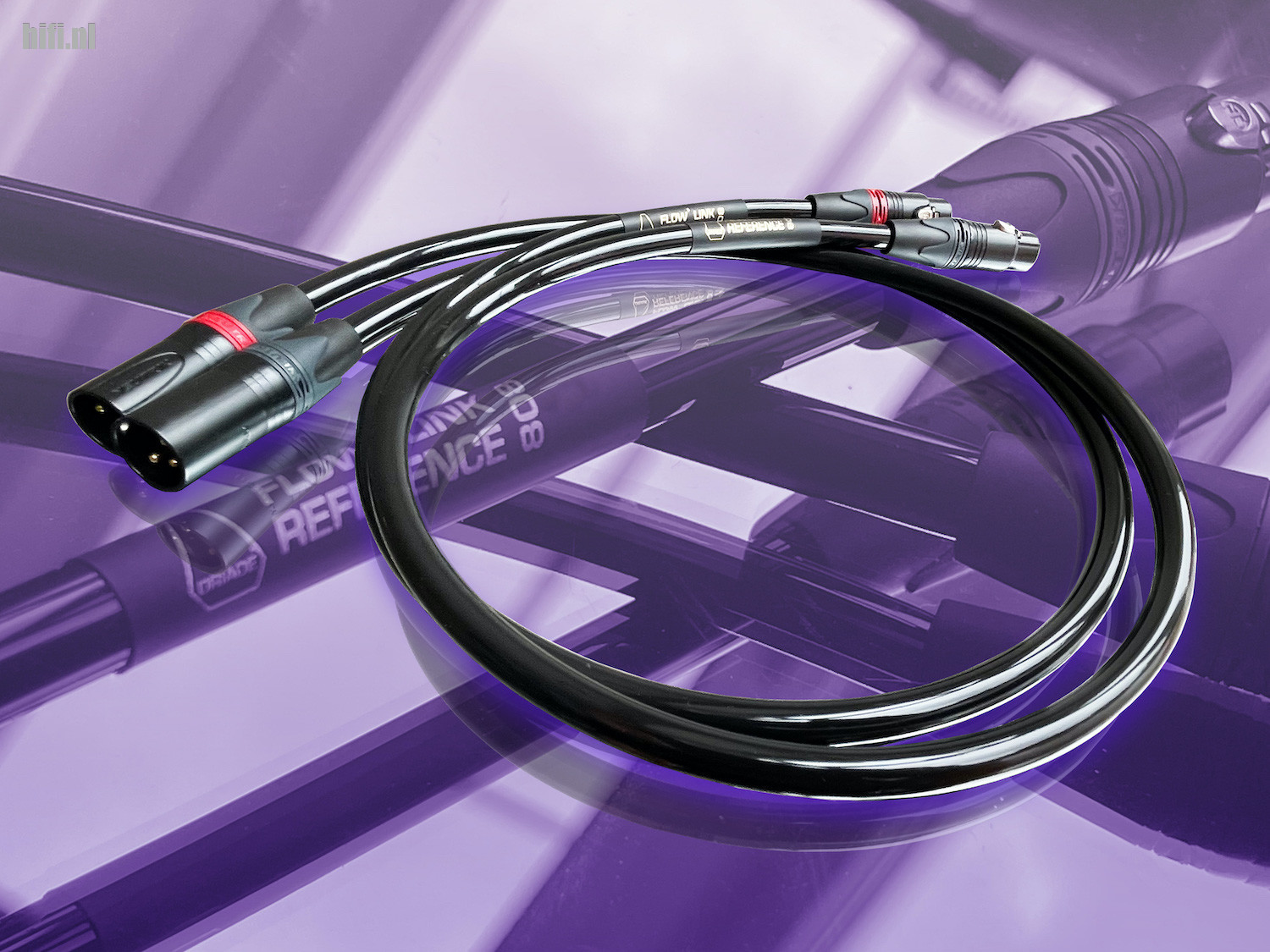
After reading this review, you might be triggered to immediately purchase a set of Driade Flow interlinks. Despite the fact that perception and tonal balance of sound is very personal, we expect that the performance of your set will be taken to a substantial higher level. Period. Especially if you decide to order a set of Driade Flow 405 speaker cables along with these interlinks.
If you can afford to stretch your budget a little more, we definitely advise you to consider it. The question remains whether you should go for XLR if connections are available, or if you would be better off with the choice for an RCA model. Of course you can also purchase both versions and A-B compare them at home for the best possible result, but unfortunately there might be a small snag here. Allow us to explain.
Technical notes
To tell the whole story, we'd like to highlight the technical basics of the XLR design. After all, there is a lot to be said about the technology itself. Let's start with the Hi-Fi components that feature XLR connectors. The fact, the ability to connect XLR-cables does not always mean that the Hi-Fi component offers a true or fully balanced design. True Balanced actually means that the amplifier circuits in the component are built with four(!) separate amplifier circuits where the two mono channels are each split into two separate amplifiers for both the normal and the inverted line signal. That such components come with a hefty price tag should be obvious.
Many Hi-Fi components that are fitted with XLR connectors are built with a conventional stereo circuit or are built in dual mono design where the inverted signal is created later. Some high-end components are fitted with specially developed (Lundahl) transformers that convert the single-ended audio signal to a hot and cold signal and vice versa. After a True Balanced design, this solution is the most desirable but also a relatively expensive one. For this reason, many Hi-Fi components with XLR connections use differential amplifiers. The more premium quality Hi-Fi components are sometimes built with discretely designed XLR buffer stages, the more affordable components often feature the more affordable differential opamps for this purpose.
Embrace or avoid XLR?
After reading the above, you will probably wonder whether using an XLR cable offers any advantage over its RCA counterpart. A valid question to ask yourself. If you, in fact, own high-quality Hi-Fi components that offer a True Balanced design or a design in which, at least, decent quality input and output transformers are being applied, the choice for an XLR variant is always worthwhile to invest in.
When a differential amplifier or buffer stage is implemented, the answer is twofold. Aside from the fact that the shortest signal path usually provides the best performance, this method is fine. However, if you own Hi-Fi components with XLR connections where one or more components use cheap mass-produced differential opamps, it is possible that this opamp is the weakest link in the signal path and thus adversely affects sound quality even more. Depending on the performance of the opamps used, and the implementation in the audio circuit, they may not always respond well to cable impedances, capacitance or inductance. Perhaps more importantly, cable reflections that are caused by the applied connectors. In that case, the A-B differences between RCA and XLR of the same brand and model may be noticeable in some setups. This however has not so much to do with an inferior cable design, but mainly with the electronic design of the HiFi components itself.
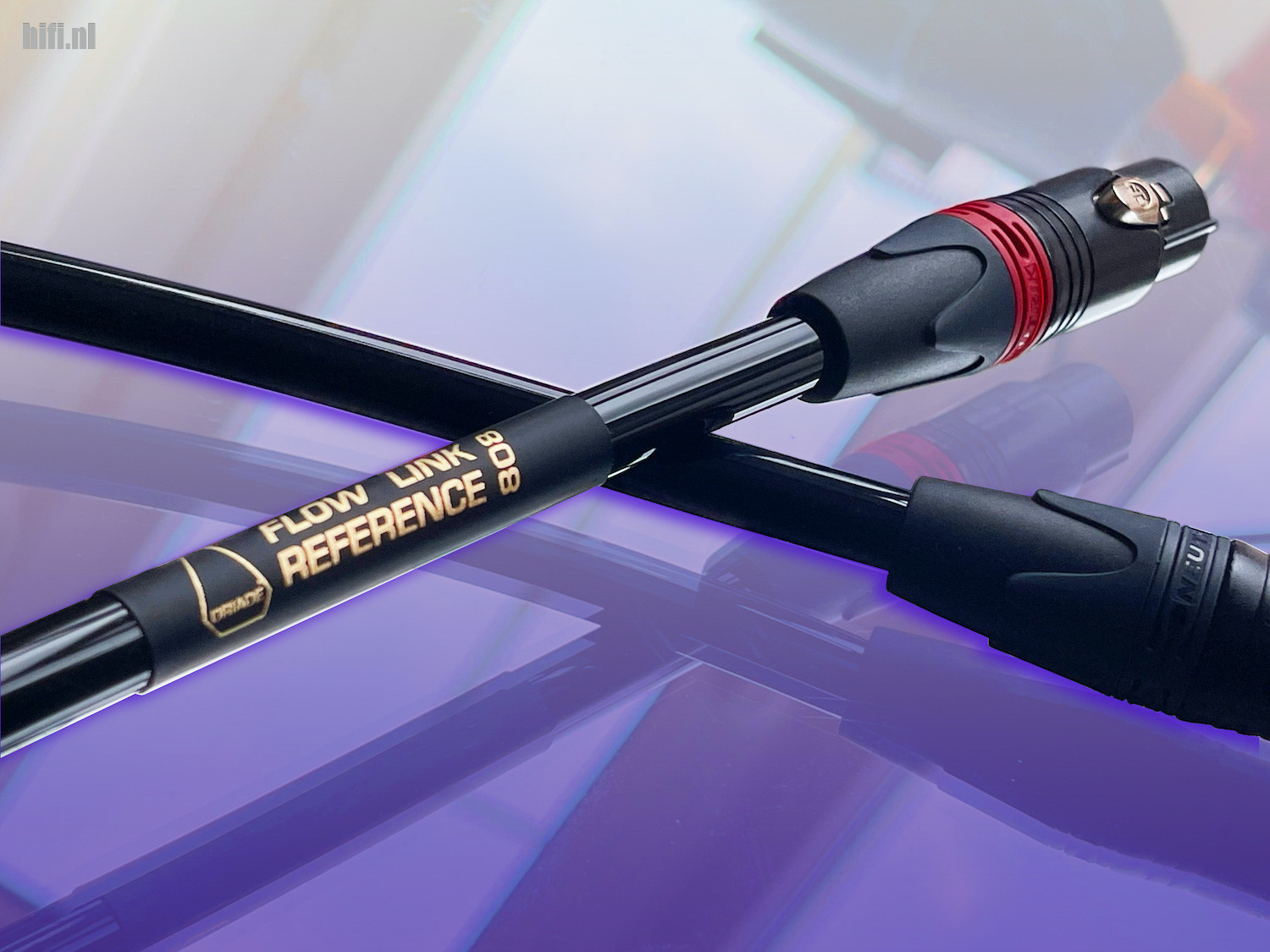
For the second part of this answer we assume a worst-case situation. A situation that is rarely applicable in Hi-Fi equipment by renown audio brands. Despite the possible performance issues that are caused by mediocre low-cost mass-market opamps, XLR cables can still offer advantages. Why? An XLR audio signal is divided into a hot (+), cold (-) and an earth. The hot and cold signals are physically mirrored to each other. If the interlink is exposed to electric or magnetic interference, these spikes or ripples are present with an equal positive amplitude on both (hot and cold) line signals. After the XLR signal is handled in the receiving Hi-Fi component, the polarity of the pollution on the one signal line is reversed to the same pollution on the other and they physically cancel each other out. Result: a quieter background.
Because a balanced connection offers a natural noise cancelation design, it has been used in studio environments for decades. Environments with many hundreds of meters of cabling in which it is most likely that unwanted interferences are picked up along the way. Despite the fact that opamps with a questionable quality can reduce the sound quality, it still can offer better results while using longer cable lengths. Even at home.
To choose for XLR of RCA is a careful consideration to make for yourself. Do you take the slightly lower performance caused by your Hi-Fi equipment for granted if it effectively decreases hum or noise that otherwise is picked up by RCA interlinks? If yes, then choose XLR. If there is no need to bridge longer distances and your systems idle signal is dead quiet? Then choose 'safely' for the RCA variant of the Driade Flow Link Reference 808. We cannot provide you with a more honest advice than this.
Final Verdict
For many audio enthusiasts the return of Arnold Heres to the audio industry didn’t go unnoticed. The founding father of Driade's vintage high-end loudspeaker designs and designer of both high-end audio components and Hi-Fi cabling for renowned brand names in the highend audio industry returned to his roots. After reintroducing even better sounding two- and three-way floor standing Driade loudspeakers, Heres also successfully added high-grade Hi-Fi cables to its product portfolio.

That Heres truly masters his designing competences, is underpinned with the launch of Driade Flow Link Reference 808 interlinks. These interlinks left such a great impression that we could not resist to publish a full review. Do you own a premium grade Hi-Fi set and feel a lack of authenticity and emotion, these Driade Flow Link Reference 808 XLR interlinks will push your sound system to a substantially higher performance level. With these Flow Link Reference 808 interlinks by Driade System you will enjoy your valuable music collection with heart and soul for many years to come.
Driade Flow Link Reference 808 XLR interlinks
€ 849 (1 mtr set)
Driade Flow Link Reference 808 RCA interlinks
€ 749 (1 mtr set)
www.theflowcable.com | www.driadesystems.com
Rated 5 / 5

